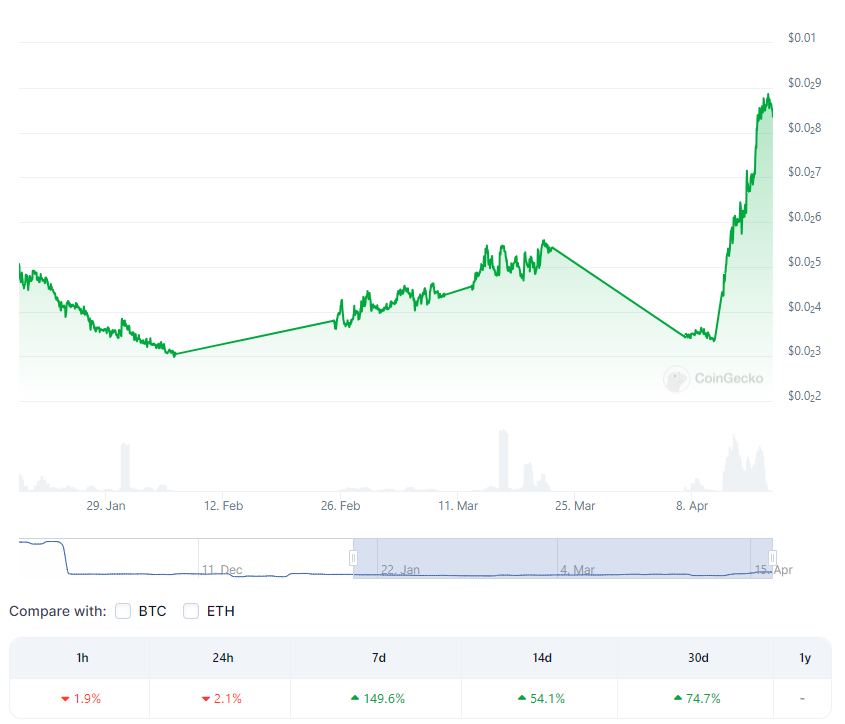Ken Anderson’s path to becoming a leading Chief Technology Officer (CTO) in the blockchain industry is a testament to his diverse background and expertise. With a solid foundation in business administration and a specialization in management information systems, coupled with his programming skills honed since his teenage years, Anderson was well-prepared for the challenges ahead. His eight-year stint in the military as a non-commissioned officer not only sharpened his leadership skills but also instilled in him a pragmatic approach to problem-solving.
“I discovered early on that software programming could improve most things. In an early job with insurance, I created a database of risk issues which meant the sales people did not have to ask the same questions repeatedly. I understood that programming could solve a lot of problems.”
Ken Anderson (Tashi CTO)
The Power of Software Programming
Anderson’s journey into the tech world began in the insurance sector, where he developed a database to streamline the repetitive queries handled by sales personnel. This early experience underscored the potential of programming to address real-world problems efficiently and laid the groundwork for his future endeavors.
Despite initial reservations about his readiness, Anderson’s early appointment as a CTO under the mentorship of a seasoned professional accelerated his growth in the role. His subsequent venture, LaunchBadge, a software engineering company co-founded with tech expert Ryan Leckey, further honed his skills in software architecture and his appreciation for practical applications of technology.
“The Tashi consensus algorithm has some similarity with other BFT algorithms, including a two-phase consensus protocol with a gossip and virtual voting functions. In the Tashi consensus algorithm, you don’t need to count votes however, as each node independently ends up calculating the same thing.
Ken Anderson
The limitations of traditional blockchain technology in meeting the performance requirements of real-world applications led Anderson and his team to explore alternative solutions. This exploration resulted in the discovery and development of the hashgraph technology even before the advent of Hedera. Anderson’s role as lead developer advocate at Hedera allowed him to delve deeply into consensus algorithms, contributing significantly to the field.
TASHI 3-Month Price Chart

Tashi: A New Chapter
At Tashi, co-founded with Bobby Bhatia and Jay McCarthy, Anderson helped develop a unique consensus algorithm that simplifies interactions in decentralized networks by eliminating the need for intermediaries. This breakthrough is particularly influential in the gaming industry, where Tashi’s consensus engine integrates seamlessly with the Unity gaming engine, promising a fair and cheat-proof gaming experience.
The Tashi consensus engine is not just a tool for gaming. Its applications extend to creating efficient message queues for the Internet of Things (IoT) and building decentralized physical infrastructure networks (DePIN). This technology ensures rapid consensus (around 30 milliseconds), supporting thousands of transactions per second without sacrificing the interactive quality essential in gaming.
“Right now, we are focusing on the gaming space. If you are familiar with DePin, or decentralized physical infrastructure networks, we’re looking to be the DePIN of gaming.”
Ken Anderson
Tashi’s impact on the gaming industry is poised to grow as more developers recognize the benefits of integrating Web3 features like asset ownership and cross-platform transfers without compromising performance. The team’s ongoing discussions with major game development companies and their support for a popular streaming platform in Indonesia highlight the broad potential of their technology.
“It was a good proof of concept but was never going to replace traditional games. It did however ensure a fair state or a consistent state between the game players. The quest was to use technology to preserve the fair state but at speed.”
Ken Anderson
Every time a player initiates an action in a game using the Tashi consensus engine, the system quickly achieves consensus among all players before finalizing and recording the move on each player’s computer.
“Although this process might seem like it would cause delays, we’ve successfully reduced the response time to about 30 milliseconds, which is acceptable in most gaming scenarios. Thus, we’ve engineered a solution that not only supports thousands of transactions per second but also minimizes latency to 30 milliseconds or less. This innovation is paving the way for Web3 integration into mainstream gaming.”
The Tashi team is currently engaging with major game development companies worldwide, who are showing keen interest, although the transition from Web2 to Web3 environments takes time. Anderson anticipates that the initial thrust into this new territory will likely come from Web3 developers, known for their rapid innovation and market responsiveness.
“Enabling asset ownership and the transfer of assets across different platforms is now feasible; we’re enhancing the gaming experience by adding value, not creating bottlenecks.”
While Tashi is navigating a landscape where some competitors remain entrenched in traditional blockchain methodologies like Proof of Work and Proof of Stake, they are setting themselves apart by focusing on performance and practical applications.
A Vision for Web3 Integration
“If you want to retain the security level that Web3 promises and the performance that Web2 expects, there is no one out there coming close to Tashi.”
Ken Anderson
“Avoidance of cheating is a much bigger priority than ownership of assets. Gamers expect to pay to game, not to earn.”
So, while game demands are the driving function into the gaming space, it doesn’t stop there. Tashi is tapping into the unused computer resources sitting on people’s desks. The team has built in a compensation model that rewards community players for resources they are not using in their computers. In the coming days of potential GPU shortages this is even more attractive to publishers. Or when looking at the upcoming heavy AI and machine learning demands, an ability to tap into underutilized resources is also very attractive.
Tashi is talking to lots of potential partners across the gaming sector, and is already supporting a Twitch-lookalike player in Indonesia with more than 5 million users.
“They built their successful business on Web2, but we are migrating them to Web3 to allow for things like sharing advertising revenue between creators and fans, giving the most popular streamers not only ad revenue but also fan revenue. It also allows them to give fans a reward in the form of a token which is redeemable for watching.
“This is important for us – to add Web3 functionality to Web2 applications without latency or degradation of transaction volume.”
Ken Anderson
Ken Anderson’s vision extends beyond gaming. By leveraging underutilized computing resources, Tashi plans to address future challenges like GPU shortages and the increasing demands of AI and machine learning. Their innovative compensation model for community members further demonstrates the practical application of blockchain technology in everyday computing.
To find out more about the services offered, technology developed and upcoming news, join the Tashi discord channel, or meet them at one of the many conferences the team will be attending.
Author Profile

- Jillian godsil is an award winning journalist, broadcaster and writer. co founder and editor at Blockleaders.io




